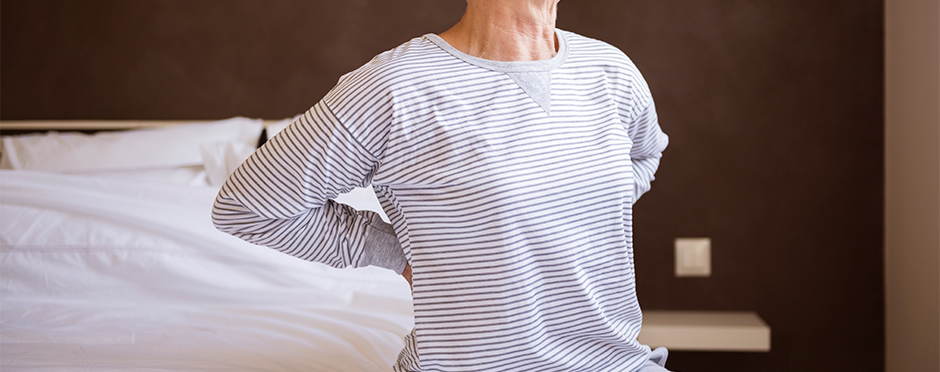
Best Sleeping Positions for your Neck and Back
1 CommentIn my experience as a physical therapist, one of the most common reasons patients seek out physical therapy is due to pain of the spine. Although certain factors related to neck or back pain are outside of our control (such as aging or arthritis), there are many factors that we do have influence over – including sleeping position.
Best Sleeping Positions for the Neck
Side sleeping or sleeping on your back are typically the two best positions for the neck. These sleeping positions are recommended because they are the easiest for maintaining good spinal alignment. In either position, you want a pillow that supports both the head and the neck (ie: fills in the gap between the neck and the bed). This can be achieved by either using a pillow that conforms to the shape of the neck, such as a feather pillow or memory foam pillow, or using a rounded pillow with a neck roll.
Stomach sleeping is not recommended due to the stress placed on the cervical spine in the fully rotated position. Related to this, positions with an arm overhead or under the head/pillow can place increased pressure on the nerves leading to numbness or tingling in the arm or hand upon waking.
Also remember these tips:
- Avoid using too high or stiff of pillows that keep the neck flexed overnight. This can result in morning pain or stiffness.
- Similarly, too flat of a pillow can put strain on the neck too. You should not feel like you are extending your neck or bending your head when lying on your back or side.
- A pillow should allow your nose to align with the center of your body when lying on your side.
- If you are a stomach sleeper, try using a pillow or towel roll under the forehead to sleep facing the mattress instead of turning the head to the side.
- If you are sleeping in an upright position like sitting, you can protect your neck by using a neck pillow to prevent your head from dropping to one side.
Best Sleeping Positions for our Low Back
Similar to the neck, the best positions for the lower back are usually lying on your back or your side. Both of these positions support the natural curve of the spine. Proper support of the low back is key and can be achieved with correct pillow support.
Stomach sleeping is not recommended as it can place increased stress on the low back due to the arch that forms in this position. Gravity pulls on the lower back, forcing it into a flattened position when lying prone on your stomach.
Use these tips to decrease low back pain during sleeping:
- A pillow under your knees when lying on your back gives support to the lower back and decreases the amount of space between the low back and the bed.
- If there is still space between the small of the back and the bed, a small pillow can be used there as well.
- For side sleepers, a pillow between your knees decreases the amount of rotation or bending that can occur in this side position.
- A pillow can also be placed underneath your waist in the side lying position to fill in the gap that may occur for certain individuals.
- The fetal position, with both the hips and knees flexed forward, allows for a very large curve of the spine. Less flexion at the hips allows for a more natural curve of the spine.
- Use pillows to decrease rotation of the spine that may occur where the upper body is supine but the lower body is on its side, or vice versa.
- If you tend to sleep on your stomach, you can attempt to “retrain” yourself by using pillows to gradually get you into a side lying position.
Remember these tips are guidelines, and individual factors may affect the best position for each person including sleep apnea, snoring, reflux, pregnancy and more. If you have specific concerns, contact your physician or stop by an Athletico for a free assessment to discuss posture tips.
Physical therapy is usually the thing you are told to do after medication, x-rays or surgery. The best way to fix your pain is to start where you normally finish – with physical therapy at Athletico. Schedule a free assessment in-clinic or virtually through a secure online video chat where our team can assess your pain and provide recommended treatment options.
The Athletico blog is an educational resource written by Athletico employees. Athletico bloggers are licensed professionals who abide by the code of ethics outlined by their respective professional associations. The content published in blog posts represents the opinion of the individual author based on their expertise and experience. The content provided in this blog is for informational purposes only, does not constitute medical advice and should not be relied on for making personal health decisions.

1 Comment
Michael Treloar
Well worth a read. Got great insights and information from your blog. Thanks.